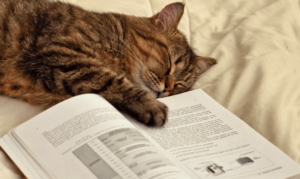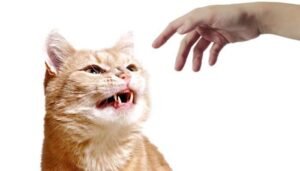If you’re reading this, you’re probably wondering, “Why is my cat always hungry?” It’s common for cat parents to notice their cats eating a lot, but how do you know if it’s normal behavior or something that needs attention? There’s a difference between a healthy appetite and a cat that’s constantly scavenging for food. If your cat seems to be eating all the time, you may be dealing with something more than just hunger.
What Causes Cats to Eat So Much?
This condition is known as polyphagia, which simply means excessive hunger. It’s not a disease itself, but rather a symptom of either a medical issue or a behavioral problem. To address this, it’s important to figure out the root cause. Once you tackle the cause, the symptoms should resolve on their own. Let’s break down the reasons behind your cat’s insatiable appetite.
1. Rule Out Health Issues
The first step is to ensure your cat is healthy. Several medical conditions can cause excessive hunger, including:
- Diabetes Mellitus
- Worms or Parasites
- Tumors or Insulin Shock
- Hyperthyroidism
If your cat is eating a lot but still losing weight, or if it’s gaining weight despite eating less, these could be signs of an underlying health condition. A visit to the vet is the best way to rule out these issues and get your cat the right treatment. In general, lactating cats and kittens naturally have an increased appetite, so this could also explain the hunger.
2. Don’t Give In to Begging
If your cat is constantly begging for food by meowing, purring, or following you around, it can be hard to resist giving in. But here’s the trick: ignoring the begging is the best way to handle it. When your cat begs for food, it’s often learned that persistence pays off. By responding, you reinforce this behavior, making it more likely that your cat will continue to beg in the future.
Instead, calmly ignore the behavior. Don’t even look at the cat or acknowledge it. With consistency, your cat will learn that begging doesn’t result in food, and over time, the behavior should diminish.
3. Is Your Cat Getting Enough Food?
One of the first things to assess is whether your cat is getting the right amount of food. Cats that aren’t fed enough or have irregular feeding schedules may seem hungry all the time. Here’s how to evaluate your cat’s food needs:
- How much are you feeding them? Check the packaging on your cat’s food for the recommended daily intake. This amount will vary depending on your cat’s size, age, and gender. Male cats, in general, tend to eat more than females unless the female is nursing.
- Are meals spaced evenly throughout the day? It’s important to divide your cat’s daily food intake into smaller, more regular meals. Cats have a natural tendency to eat multiple small meals throughout the day, so feeding your cat 2-3 larger meals might not satisfy them. Try to stick to a consistent feeding schedule, and avoid offering treats between meals. This will help regulate your cat’s appetite.
4. How Much and How Often Should You Feed Your Cat?
To help your cat feel full and satisfied, you should stick to a structured feeding routine. The recommended amount of food is usually listed on the packaging, but here are some general guidelines:
- Feed your cat at least three times a day. While some people prefer to feed once or twice a day, it’s healthier for cats to have smaller, more frequent meals. Cats are natural hunters, and their bodies are designed for more frequent, smaller meals.
- Reevaluate every couple of weeks. If you notice that your cat is still acting hungry despite following the feeding guidelines, you might need to adjust the portion sizes or feeding schedule.
5. Why Is My Cat So Skinny Even Though She Eats a Lot?
If your cat is eating a lot but remains thin, this could be a sign of an underlying health issue, such as hyperthyroidism, diabetes, or parasites. Cats with these conditions may eat excessively but fail to gain weight or may even lose weight. It’s crucial to get your cat checked by a vet if this is happening, as early diagnosis and treatment can prevent further complications.
6. Wet Food vs. Dry Food: Which Is Better?
When it comes to feeding your cat, there’s an ongoing debate: should you feed wet food or dry food? Here’s a quick breakdown:
- Dry food: It’s more affordable, convenient, and good for your cat’s teeth. However, dry food is less hydrating, so always ensure your cat has access to fresh water.
- Wet food: It’s more hydrating, helps with muscle development, and is generally higher in protein. However, it’s more expensive and has a shorter shelf life once opened.
For the best of both worlds, try offering a combination of both wet and dry food to your cat. This variety can help ensure that your cat receives a balanced diet.
7. Always Provide Fresh Water
Regardless of whether you feed your cat wet or dry food, it’s important to provide plenty of fresh water, especially if you’re feeding them dry food. Dehydration can lead to health issues, including kidney problems and urinary tract infections.
Conclusion: Maintaining Your Cat’s Health
If your cat seems to be constantly hungry, the first thing you should do is rule out any medical conditions with your vet. Once you’ve confirmed that your cat is healthy, ensure you’re feeding them enough and on a consistent schedule. By following a structured feeding routine and offering a balanced diet, you’ll help your cat maintain a healthy weight and satisfy their appetite in a way that keeps them happy and well-nourished.






